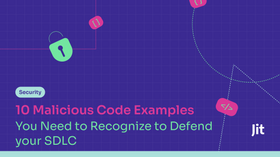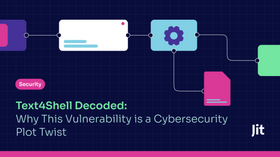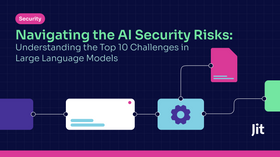A Guide to Static Application Security Testing (SAST)
Updated September 8, 2025

Static Application Security Testing (SAST) is like a routine health check-up for your code: you might not see its benefits until you’re faced with serious issues down the line. Skipping SAST leaves your software vulnerable to hidden threats like insecure deserialization, buffer overflows, and cross-site scripting (XSS)- all of which attackers can leverage to steal sensitive data and disrupt your services with minimal effort.
During their initial vulnerability check, 83% of applications reveal at least one security flaw. These hidden vulnerabilities are widespread, and many will go unnoticed until they are exploited. If you treat SAST as a routine health check for your code, understand how it works, and how to leverage it best, you can identify and fix these weaknesses early, preventing them from becoming costly and damaging security incidents.
Understanding Static Application Security Testing (SAST)
Static Application Security Testing (SAST) is a way to dissect an application’s source code to uncover security flaws without running the software. By analyzing the codebase at rest, SAST tools can detect issues such as SQL injections, cross-site scripting (XSS), and buffer overflows while the code is fresh. This early detection allows developers to patch issues before they have a chance to manifest in production environments.
To map out potential weaknesses, SAST tools leverage techniques like abstract syntax tree (AST) analysis and data flow tracking. AST analysis breaks the code into a tree structure representing the grammatical syntax, allowing SAST tools to identify insecure coding patterns and logic flaws systematically. Data flow tracking can detect points where malicious inputs could cause issues, such as unchecked user inputs or improper data handling.
Why Static Application Security Testing (SAST) Remains Critical in a Multi-Testing Environment
- Targeted Code Analysis: SAST dives directly into your source code to find vulnerabilities that other tests might miss. Unlike Dynamic Application Security Testing (DAST) and Interactive Application Security Testing (IAST), which look at how the application runs, SAST pinpoints the exact lines of insecure code you need to review.
- Efficient, Cost-Effective Remediation: Identifying and fixing vulnerabilities during the coding phase is much cheaper and faster than addressing them after deployment. SAST tools integrate with your existing development workflows and pipelines, providing real-time feedback without disrupting your team’s productivity.
- Better Developer Integration: Developers get security alerts right where they code, reducing the need to switch between different tools. As a result, fixing vulnerabilities becomes a natural part of the development process, keeping your team productive and focused.
- OWASP Top 10 Coverage: SAST tools identify the most common and dangerous security risks outlined by the OWASP Top 10, such as SQL injections and cross-site scripting (XSS). They offer a broad and detailed analysis that strengthens your overall security posture.
Common Challenges with Traditional Static Application Security Testing (SAST)
While traditional SAST tools provide important security insights, they have challenges limiting their effectiveness in modern development environments. One major issue is slow scan times. Legacy SAST tools can take hours to analyze large or complex codebases, causing delays in the development process. In agile settings where speed and efficiency are core goals, these lengthy scans can hold up releases and limit productivity.
Another problem is the high rate of false positives. Developers frequently encounter non-critical issues flagged by SAST tools. The OWASP Benchmark Project found that traditional SAST tools have an accuracy rate of just 20%, meaning 80% of the reported vulnerabilities might not be real threats. This limitation forces developers to chase after irrelevant alerts, distracting them from addressing genuine security issues.
Whenever developers encounter an unnecessary alert, they must pause their work to investigate its validity. This constant interruption disrupts the development flow, making it harder to maintain productivity and increasing frustration within the team. Approximately 72% of teams report that false positives from SAST tools negatively impact their efficiency.
5 Best Practices for Supercharging Your SAST Workflow
1. Choose Modern SAST Tools with Seamless Integration into Developer Environments
Every time you switch from your IDE to another tool, it takes time to get back into the coding flow. This context-switching negatively impacts productivity. Select SAST tools that integrate directly with your IDEs and repositories. Getting security feedback within a familiar coding environment means you don’t have to jump between different applications. You can maintain your momentum and handle issues as they arise without losing valuable development time.
2. Implement Change-Based Scanning
Use SAST solutions that only scan the modified parts of the code. This change-based approach can dramatically reduce scan times that delay development. You can catch new vulnerabilities promptly without the overhead of analyzing the entire codebase each time. To speed up remediation, use automated workflows to trigger change-based scans automatically with each code commit or pull request.
Use tools that also track dependency changes alongside code changes. Vulnerabilities in third-party libraries introduced by dependency updates can be just as critical as issues in custom code. Pair change-based scanning with a nightly or weekly full-codebase scan to ensure no legacy vulnerabilities slip through the cracks.
3. Prioritize Critical Vulnerabilities with Context-Aware Prioritization
DevOps teams don’t have the bandwidth to case every alert, and treating all vulnerabilities equally is a losing battle. Opt for SAST tools with context-aware prioritization capabilities. These tools can surface the most exploitable vulnerabilities based on their potential impact and likelihood of being exploited. You can focus on high-risk issues, first addressing the most significant problems. If development timelines allow, you can then move to remediate lower-risk issues.
Jit’s Product Security Platform offers a solution to your backlog of vulnerabilities with its Context Engine. It dynamically assesses vulnerabilities within the real-world context of your environment. It focuses on risks tied to production systems, critical assets, or internet-exposed resources. By routing alerts and remediation guidance to the right teams, Jit helps you manage large volumes of alerts with precision.
4. Integrate SAST with CI/CD Pipelines
Embed SAST into your Continuous Integration/Continuous Deployment (CI/CD) pipelines using tools like Jenkins or GitHub Actions. This integration means that security scans are triggered with every code commit. Because the code is still fresh in your mind and the feedback is immediate, you can quickly fix vulnerabilities without needing to revisit and patch the code after it’s been deployed.
Configure different scanning depths based on the pipeline stage. For instance:
Run lightweight scans for every commit or pull request.
Perform comprehensive scans during nightly builds or pre-release stages.
Ensure you use break-the-build policies wisely. Configure them to trigger only high-priority vulnerabilities to avoid unnecessary disruptions and route detailed reports to the responsible developers.
5. Provide Actionable Remediation Guidance
Choose SAST tools that offer clear and actionable remediation guidance for identified vulnerabilities. Clear guidance helps you more deeply understand the nature of the issues and implement effective solutions quickly. It also streamlines the remediation process and builds your team’s web application security expertise over time, making future fixes faster and more accurate.
Prefer tools that integrate with secure coding guidelines (such as OWASP and CERT) and provide tailored guidance based on your programming language or framework.
Best SAST Tools to Use
When it comes to protecting your code, these SAST tools each bring something unique to the table:
- Jit: Simplifies DevSecOps by automating security checks across your code, dependencies, and infrastructure. Instead of managing multiple tools, it consolidates scans (using Semgrep, GoSec, and more) into a single pipeline and prioritizes critical risks.
- Semgrep: A fast, open-source scanner that supports 30+ languages. Its strength lies in its custom rule capabilities. For example, you can flag patterns like unsafe API calls or deviations from internal coding standards.
- GoSec: Specifically built for Go, Gosec identifies risks like hardcoded secrets, SQLi-prone queries, or weak encryption. Lightweight and focused, it’s designed to slot into fast-paced workflows.
- Veracode: Cloud-based platform offering SAST, SCA (dependency scanning), and DAST (runtime testing) across multiple programming languages. Provides detailed fix guides and compliance reports.
- Checkmarx: Scans 25+ languages for vulnerabilities like cross-site scripting (XSS) or insecure API endpoints. Its custom query language (CxQL) lets teams build nuanced rules and integrates tightly with DevOps tools like Jenkins and Jira.
- Coverity: Specializes in complex codebases with advanced analysis to minimize false positives. It’s trusted in industries like automotive and aerospace to catch subtle flaws that could lead to system failures.
Effortless Security for Modern Developers
SAST is essential for today's application security, offering critical code-level insights that protect your software from vulnerabilities. Its true strength comes from how smoothly it fits into your daily development process. Instead of being a separate, disruptive step, SAST becomes a natural part of your coding routine, allowing your team to stay productive and focused on building great software.
Jit is a modern Product Security Platform packed with all the capabilities you need to simplify and automate SAST testing across your development pipeline. It seamlessly connects with popular IDEs like VS Code and DevOps platforms like GitHub and GitLab.
Plus, with innovative features like change-based scanning, Jit analyzes only the code that’s been modified, cutting scan times dramatically. Its Context Engine highlights the most critical vulnerabilities so you can focus on fixing what matters most without getting bogged down by false alarms or low-risk findings.
Gain developer-friendly SAST coverage with fast, accurate, context-aware checks and remediation guidance. Explore more here.










